| The Weddell Seal (Leptonychotes weddellii) is circumpolar in distribution and is most abundant near the coast of Antarctica itself. It is the southern-most breeding seal in the world. Compared to the other seals with which it may be confused, the Weddell is smaller-headed and quite round-bodied. Males may weigh upwards of 1000 pounds. The animal on the ice at right was photographed in January, 2002, in the Errera Channel of the Antarctic Peninsula with a Canon EOS 1V and EF 70-200mm F/2.8 L IS lens and 2X extender on Fuji Velvia. The animal in the next shot, resting on a rock, was at Cuverville Island, Antarctica, in January, 2003, and was photographed with a Canon D60 and the same lens as above. |
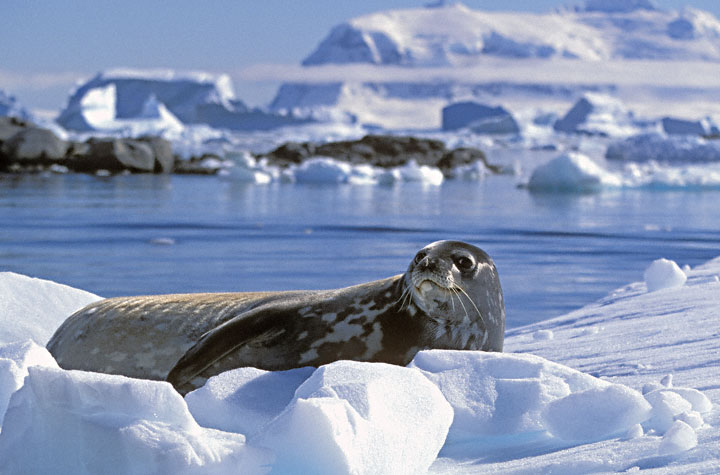 |
|
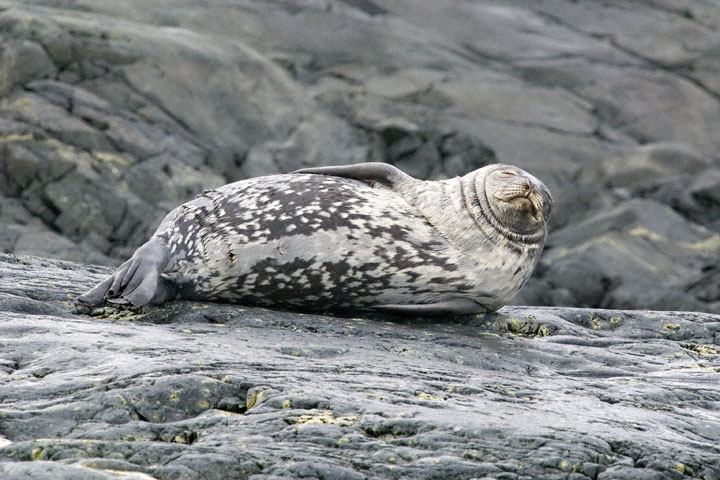 |
| On the right is a shot from Cuverville Island of a Weddell Seal as it heads into the water. A Kelp Gull is in the background. |
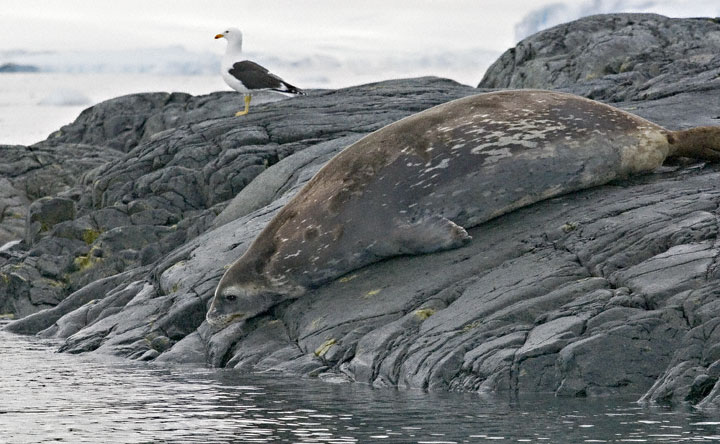 |
| The next two shots at right were taken at Half Moon Island, Antarctica, in December, 2003, with a Canon EOS 10D and the same lens as the shots just previous. |
 |
|
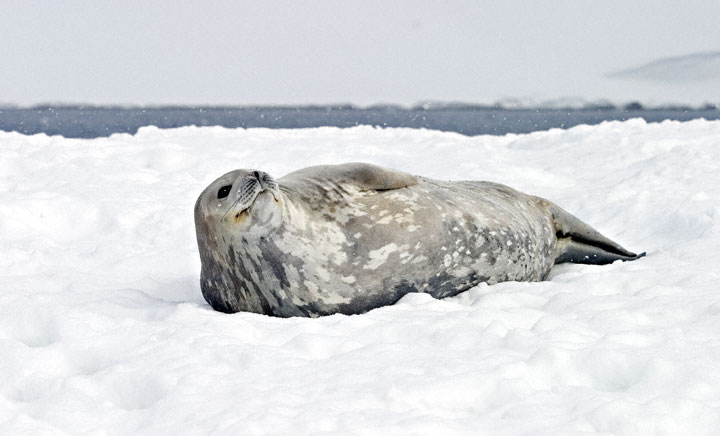 |
| The Weddell Seal resting on the rocky beach in the next two shots was at Selvik Cove, Antarcticam in January, 2000. These images were taken with a Canon EOS 3 and an EF 70-200 F/2.8 L lens on Fuji Velvia film. Gentoo Penguins share the beach with the seal. |
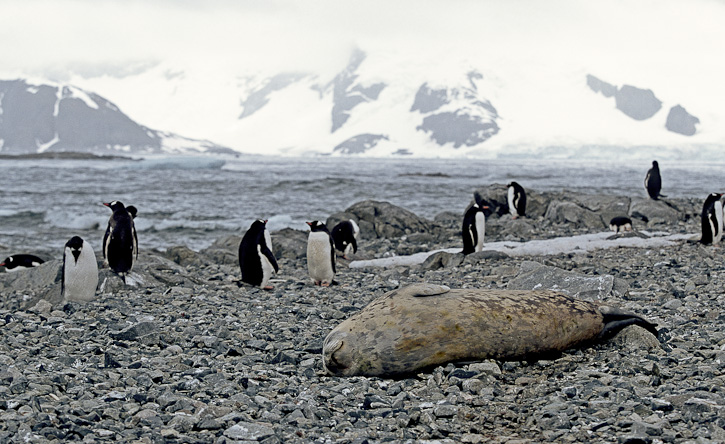 |
|
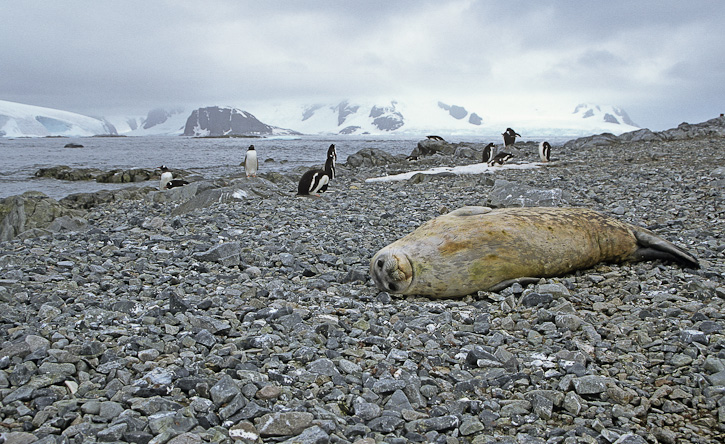 |
| The next two shots show a Weddell Seal sleeping on ice at Coulman Island, Ross Sea, Antarctica, in December, 2001. |
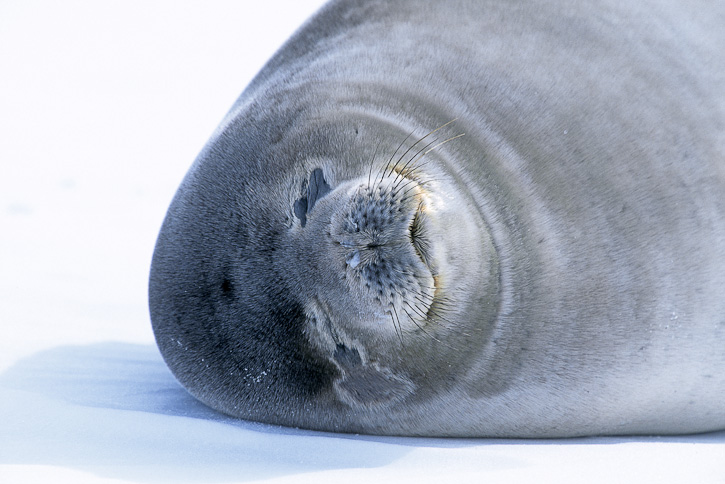 |
|
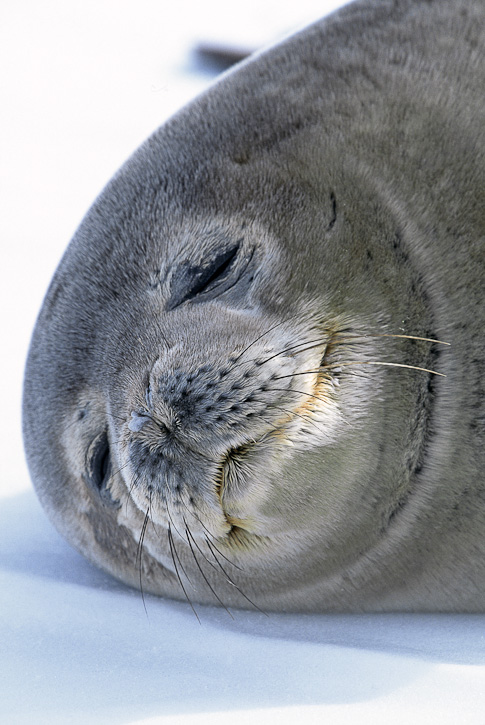 |
| During times when the ocean is frozen over, seals will make a breathing hole where they can come to get air. A Weddell Seal breathing hole is visible in the shot at right taken at Coulman Island, Ross Sea, Antarctica, in December, 2001. In the following shot the snout of a Weddell Seal can be seen at a breathing hole. |
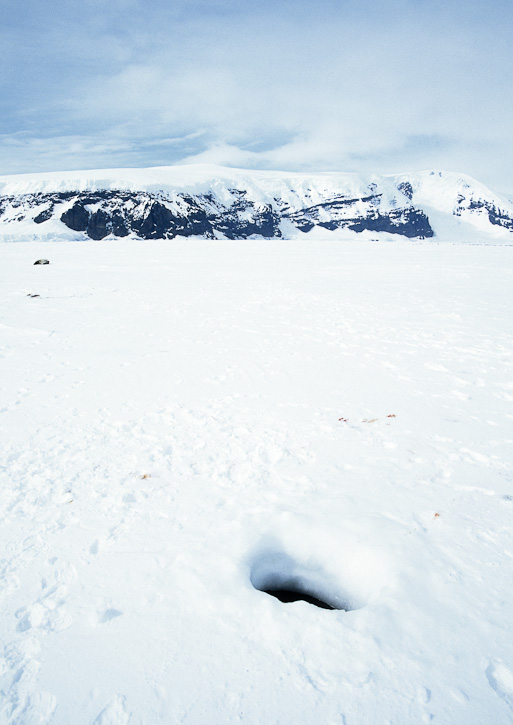 |
|
 |


















